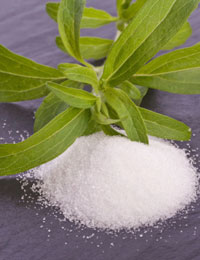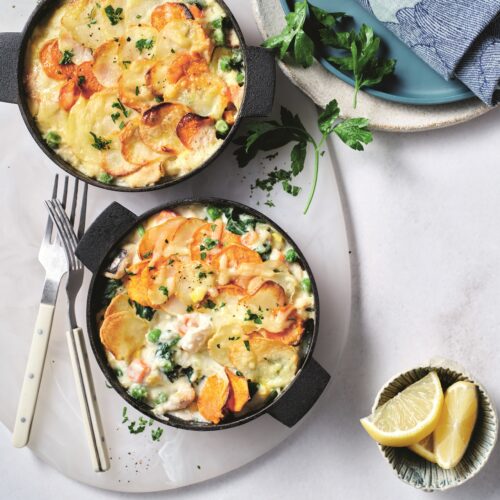
How was your Easter? Did you (like the rest of the nation) enjoy a few sweet treats?
I was not too surprised to learn recently that we Kiwis munch our way through six million marshmallow eggs and four million crème eggs every Easter. It’s such a traditional treat at this time of year, and I didn’t see our love of chocolate diminishing this year, despite more and more people focussing on limiting the sugar in their diets.
If you’re feeling like you want to cut down on the sweet stuff post Easter, you might be looking at choosing lower-sugar products. What we’ve noticed lately is a lot of foods on shelves using alternative sweeteners – things that are not sugar – to cater to a growing consumer interest.
One of the ingredients being used a lot these days is stevia. Stevia is a sweetener extracted from the leaves of the Stevia rebaudiana plant. It has been used for centuries in Argentina, Brazil and Paraguay to sweeten foods and drinks and is widely cultivated in Asia. The fresh leaves are reported to be 15-20 times sweeter than sugar, and extracts from the leaves can be up to 300 times sweeter – meaning you don’t need to use very much at all to get a sweet taste. Unlike sugar, it has hardly any kilojoules, and no impact on blood sugar. People who want to avoid artificial sweeteners like using stevia because it is a naturally-derived product, coming from a plant. You can actually grow your own stevia plants, with seeds available in seed catalogues. Bulk stevia powder is available in the supermarket for use in cooking, under several brand names.
So is this sweetener the answer to our prayers of unlimited sweet things with no sugar addiction and no weight gain?
On paper, stevia does seem like a good option if you want to eat something sweet. Using stevia instead of sugar does cut the energy content, usually, of the food, and satisfies the desire for a sweet flavour. If you’re eating a lot of sugary foods or drinking sweet drinks, switching to stevia-sweetened ones would probably have a positive impact in terms of ‘energy in’ and could lead to weight loss.
That’s not necessarily the case with other sugar alternatives that are popping up in recipes and products on the shelf. Honey, for example, while natural, is really just another form of sugar, with similar calorific content to sugar. Coconut sugar, while widely promoted as being ‘healthier’ than regular sugar, is really just more of the same. And rice malt syrup and dextrose – both widely used by promoters of ‘sugar-free’ diets – are again, just other forms of sugar, and all are considered ‘free sugars’ by the World Health Organisation (WHO) who advise us to limit them to less than five per cent of our daily calorie intake.
In fact, in our story How to be sugar smart, we found 30 different names for sugar that you might see on labels or in recipes. We consumers need to have our wits about us if we really want to keep our sugar intake low.
So what’s the answer? Instead of searching the aisles for ‘low-sugar’ foods, a better long-term approach might be to try and train our palates away from overly sweet foods in the first place. While sugar is not the toxic, evil substance of popular diet theories – and a bit of a sweet treat every now and then is not going to kill us – it is not a good idea for any of us to have too much sugar. And the issue with any kind of sweetener – natural or otherwise – is that it still encourages our natural desire for sweetness. In the modern food environment where high-energy foods, including those high in sugar, are everywhere, our sense of what is an everyday food and what is a treat food can also become easily warped, with the end result being we eat more of everything, sugar and stevia included.
When you’re used to eating a lot of sweet foods it can be tricky to cut them out, but take it gradually and just as with salt, you can adjust to eating less. If you’re a sweet drink lover, try switching to one of the stevia-sweetened waters or low-sugar iced teas as an interim step, then switch to plain water with sliced fruit in it. Do the same with sweetened yoghurt and cereal. Gradually, you’ll start to notice you prefer less sweetness, and you may also find you start to really notice and prefer the natural sweetness of fruit and other whole foods.
www.healthyfood.com










